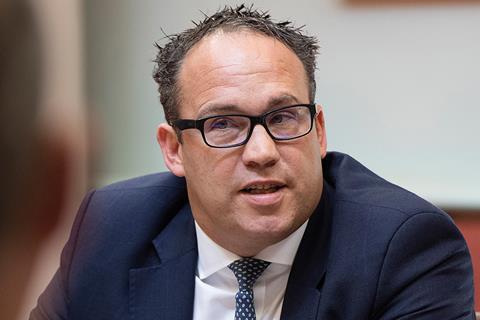In a bone-hard market for professional indemnity insurance it pays to get in early, hears Maria Shahid
The already tough professional indemnity insurance (PII) market has experienced significant hardening during the course of 2021. ‘The market is incredibly hard – “traumatic” is a good description for it at the moment,’ says Patrick Bullen-Smith of Hera Indemnity.
In April, renewal rates rose again from October 2020 levels, and law firms across the country are bracing themselves for a further increase when the traditional October renewal round arrives.

The appetite of insurers has been suppressed by a number of large claims, and while capacity remains adequate where firms have good claims records, some insurers have been tightening their new business criteria.
In short, capacity is under pressure and premiums are high. ‘The rate applied is on average tracking just north of 20%,’ notes Brian Boehmer of Lockton Solicitors.
‘We have had premiums that have doubled – but that might relate to a doubling in turnover or to a specific claim,’ says Bullen-Smith. ‘The average increase in premiums for October renewals is between 15% to 20%. This will fluctuate depending on whether a client claim position has improved or declined, and if turnover has increased or decreased.’
Bullen-Smith remains positive, nevertheless, in observing that any short-term capacity issues will resolve themselves in the medium to long term. ‘The market will eventually realise that conveyancers in particular are paying too much. More insurers will enter the market, bringing premiums down.’
John Wooldridge, executive director at Howden Insurance Brokers, concurs. ‘Insurance markets are cyclical and a hardening of rates is expected from time to time,’ he says.
‘For good firms with a good claims record there is sufficient capacity,’ confirms Lockton’s Boehmer. He acknowledges that ‘a couple of insurers are at tight capacity – just to renew their existing business their exposure has gone up by 20%. So new business criteria are being tightened. This is where the real capacity issue is’.
Property exposure
Insurers remain particularly wary of underwriting new conveyancing business, amid concerns that the stamp duty land tax (SDLT) holiday deadline will result in a flood of claims.
‘There is a concern that transactions were rushed through before the deadline and will lead to claims, but I don’t think we will see that emerge for a few months,’ says Jessica Clay, a legal services regulation expert at Kingsley Napley.

‘There are some insurers who won’t take much property exposure, while others will have a maximum ceiling,’ notes Boehmer. ‘There are definitely fewer options for firms that do a significant amount of property. We have been aware that until the SDLT holiday passed insurers would not be reevaluating their ceiling tolerance for new business risks with conveyancing exposure.
‘Insurers have a number of concerns relating to the SDLT holiday,’ says Howden’s John Wooldridge. ‘A greater volume of conveyancing work being undertaken increases the likelihood of more claims. There is also the risk that a fixed deadline creates, especially if this results in fee-earners rushing work. Another risk could be [solicitors forgetting] to warn clients that you cannot guarantee that the transaction will be concluded in time.’
Wooldridge advises firms that if their PII proposal form is going to show an increase in conveyancing work as a result of the SDLT holiday, they should consider what they can tell underwriters to allay their concerns and mitigate their position.
‘Underwriters apply a higher rate to residential conveyancing compared to other work areas and their appetite for new business undertaking more than a modest level of conveyancing is currently limited,’ he says. ‘If the percentage of conveyancing work your firm undertakes has increased considerably as a result of the SDLT holiday, but you expect it will now reduce, then we suggest you estimate the level to which you expect it will return.’
Group actions on investment schemes
Despite repeated warnings to the profession from the Solicitors Regulation Authority (SRA) regarding involvement by solicitors in high-yield investment schemes, such schemes also remain a major source of claims. In its latest guidance, the regulator explains that these schemes are being promoted as involvement ‘in the routine buying of a property, when in reality the buyer’s money is being used to finance a high-risk development or refurbishment’. Many such schemes are likely to be categorised as ‘collective investment schemes’ under s235 of the Financial Services and Markets Act 2000, meaning that those involved with them need to be regulated by the Financial Conduct Authority, warns the SRA.
When such schemes fail, investors often seek to recover their losses from the solicitors that advised them by pursuing negligence claims.
‘The value of such claims is similar to the value of premiums for the profession as a whole,’ says Frank Maher, a partner at specialist law firm adviser Legal Risk LLP. ‘The firms involved in these schemes tend to be high street,’ he adds. ‘Most have exposures in the millions. When you set this against the amount that the profession, as a whole, pays in primary cover – about £230m – that imbalance needs to be addressed. A lot of insurers won’t touch a firm that has had anything to do with such an investment scheme.’
Another emerging area of claims is ground rent. Earlier this year, the Competition and Markets Authority told housebuilders Taylor Wimpey and Countryside Properties to remove contract terms that require leaseholders to pay ground rents that double every 10 years.
‘A lot of people are still paying ground rent for houses they have bought. While this hasn’t yet materialised into claims, it may do so,’ notes Maher.
A welcome postponement
The Solicitors Indemnity Fund (SIF) is now due to close in September 2022, meaning that it will continue to provide post-six-year run-off cover for firms that have closed until then.
‘The SRA doesn’t allow solicitors to limit liability below the minimum compulsory insurance limit, in a way similar to other professions,’ says Frank Maher, a partner at specialist law firm adviser Legal Risk LLP. He argues that in return for bearing this additional risk, the profession should be provided with some protection.
‘The SRA is required by s28 of the Legal Services Act 2007 to act in a manner which is proportionate,’ notes Maher. ‘The risks faced by firms that closed six years ago are going to be very different to those for firms still in practice. The SRA should share the information on SIF’s claims exposure, in order for a workable alternative to be found.’
A further SRA consultation on the future of post-six year run-off cover is expected to be launched in the autumn.
A Law Society spokesperson said: ‘In June, we welcomed the SRA’s positive response to our lobbying for the life of SIF to be extended for a further 12 months, and we were pleased that they were taking into account concerns expressed by both the profession and consumers. We have conducted a series of member engagement meetings over the last few weeks, the findings of which will inform a submission to the SRA, which we hope will help shape the content of their consultation.’
Cyber concerns
Cybercrime, too, continues to increase in scale and severity – and therefore significance – for lawyers seeking insurance. ‘We have seen an increase in claims arising as a result of breaches in cybersecurity,’ confirms Wooldridge at Howden. ‘The increase in solicitors and other fee-earners working from home has raised the level of risk for many firms.’
There has been widespread confusion over whether a firm’s own losses are covered when a data breach takes place.

‘We are concerned that in some instances firms might be under the mistaken impression that any cyber loss would be picked up under the PII cover,’ says Wooldridge. ‘To the extent that a cyberattack results in loss of money from the client account, the current terms of the primary PII policy for firms authorised by the SRA will respond, but that is a result of the particular wording in the minimum terms and conditions.’
Minimum terms and conditions (MTCs) only apply to the compulsory layer, and from 1 January 2021 new excess layer policies for solicitors typically featured a new clause, says Boehmer. ‘This meant that the separate PII policies purchased in addition to the compulsory coverage were not affirmative in their language on not providing this coverage going forward.’
In an attempt to provide some clarity, in May the SRA announced a proposal for a new cybercrime clause in the MTCs for PII clarifying what is and what is not covered.
‘Regulators in the insurance industry are requiring professional regulators to provide greater clarity on the nature and extent of any cyber insurance cover included within the MTCs of their mandatory PII. This means that the SRA has to amend the wording of the minimum terms and conditions for solicitors’ PII,’ notes a Law Society spokesperson. ‘The SRA held a consultation on changes to their policy wording earlier this year, and the Law Society is involved in ongoing discussions with the SRA and the insurance industry about this matter. We are optimistic that a workable solution can be found shortly.’
For now, Boehmer recommends that firms take out specific insurance cover for cyber incidents to deal with any breaches. ‘Insurers understand that they have to cover third-party claims, but they don’t want to have to pay for a tech rebuild of a firm, for example, if you don’t have the right firewalls in place. We recommend that firms transfer this risk by having a cyber policy in place, so you have access to the “bat phone” in your hour of need.’
SRA investigations
Clay at Kingsley Napley notes her practice has seen an increasing number of anti-money laundering (AML) cases being brought against law firms, as well as cases of sexual misconduct and inappropriate behaviour.

‘While such cases fall outside the scope of the MTCs for PII insurance, being the subject of an SRA investigation does need to be notified to an insurer and could be a red flag and influence that firm’s risk profile,’ she says. ‘The SRA has also started to look more at the culture of a firm and how claims are being dealt with. My take is that the culture needs to be part of your risk management and compliance strategy.’
Insurers note that in some cases SRA investigations can take up to two years, meaning that the same investigation can appear in more than one proposal form.
Clay explains that while the speed of the SRA’s investigations has benefited from the introduction of its new assessment and early resolution team, allowing more cases to be closed down at an earlier stage, those that then move on to the supervision team for investigation are taking from 18 months to two years to be completed.
Take the proposal form seriously
So how can law firms best prepare for the latest renewal round? When it comes to their renewals presentation, firms need to put their best foot forward, says Boehmer.
‘You’re vying for the attention of an underwriter,’ Boehmer explains. ‘Highlight who you are and what you are about. What is the culture of the firm, how have you got to where you are today, who are your typical clients? You need to articulate that to an insurer. They’re not telepathic.’
Bullen-Smith agrees. ‘If you have an issue such as a claim to highlight, show what you have done to rectify it – whether it’s appointing a new practice manager, more training or more supervision. You have the underwriters’ interest for about 30 minutes, so highlight any claims straight away. Alternatively, it might be easier to explain it to the broker, so that they can highlight it when they are presenting your proposals.’
‘Every underwriter has a level of tolerance that allows them to deviate from their pricing model. But they need evidence for their files to justify any positive deviation,’ adds Boehmer.
Wooldridge emphasises the importance of getting in touch with brokers early on in the renewal process: ‘Pick up the phone to your broker now.’
Bullen-Smith also advises firms to start the renewal process well ahead of time: ‘Solicitors need to be open-minded and shop around. Try and get the date in early to your broker so you have plenty of time to do this.’
‘To date most firms have weathered the storm and have been able to meet the increased premiums. There is no doubt that additional fee income generated off the back of the SDLT holiday has helped, but in many cases the profitability of firms is being seriously impacted by the higher premiums. If premiums continue to increase over the next 12 months, many firms will struggle, particularly if the economy falters in the wake of the pandemic and fee income drops,’ warns Wooldridge.
The ball is in the legal profession’s court, notes Boehmer: ‘There isn’t a capacity issue, there’s an appetite issue. Insurers want to see fewer claims, and that will lead to more competition. Insurance companies are there to make a profit. An underwriter is applying their company’s capital to a risk. The stakes are high for them at the moment.
‘We need to reduce the number of claims,’ he adds. ‘PII should be there for the odd catastrophe, but right now it’s kicking up lots of claims. The premiums of the many are being outrun by the claims of the few. I don’t think there is a short-term fix to this either. We need to educate and improve the current dynamic.
‘Brokers need to educate their clients on the risks, and the profession needs to reflect, review and refine the risks in their practice areas,’ he concludes. ‘There needs to be a culture of thinking about risk. It’s not just one partner’s or practice manager’s job to deal with this.’
Maria Shahid is a freelance journalist
































1 Reader's comment